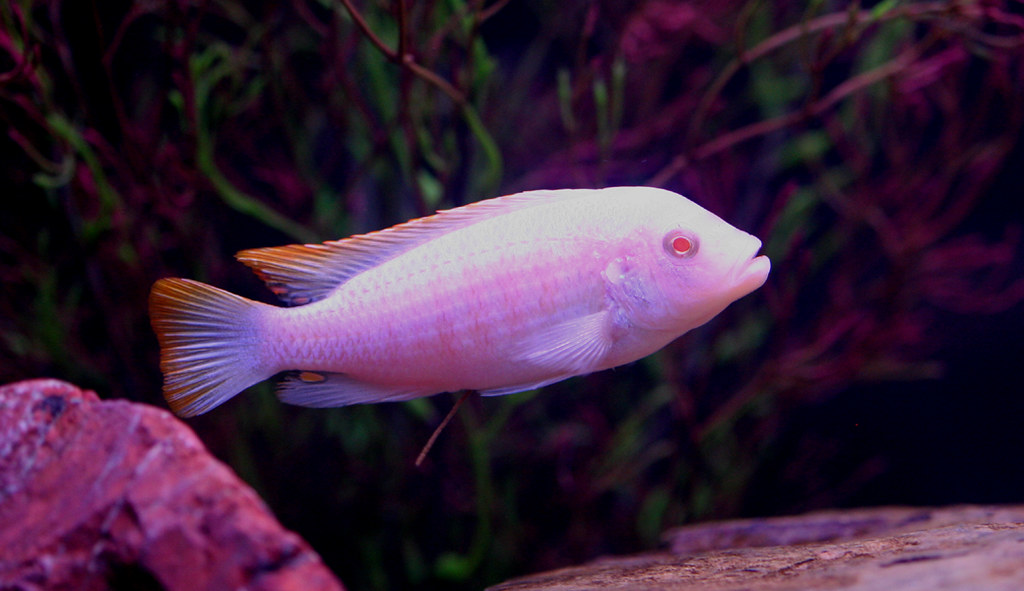

The Lemon Yellow Lab (Labidochromis caeruleus) is one of the less dimorphic species.Male fish are usually bright blue, but pale pink morphs with blue fins also exist. Female fish can be red-orange, beige, or orange with dark spots. It comes in multiple colors and those differ depending on sex. The Red Zebra Mbuna (Maylandia estherae) is a polymorphic species.Sexually mature males have dark brown or black bodies and light blue horizontal stripes. Juvenile fish and females have bright yellow bodies with black and yellow horizontal stripes. The Golden Mbuna (Melanochromis auratus) is another cichlid that displays strong sexual dimorphism.As male fish develop, their bodies turn grey-ish or blue and display very dark blue stripes. Juvenile fish and females have yellow bodies with dark brown or black vertical stripes.

The Bumblebee Cichlid (Pseudotropheus crabro) is easier to sex than other species.Let’s take a look at the most common mbuna species: Still, there are some color differences even in species with low sexual dimorphism. Not all species exhibit strong sexual dimorphism. Male and female fish often display different colors as they approach sexual maturity. We’ll take a closer look at these, one by one: – ColorationĬoloring is often the easiest way to distinguish between male and female mbunas. The main distinguishing characteristics between male and female Mbunas are color, size, fin shape, behavior, egg spots, and venting spots. When things aren’t so clear-cut, you’ll have to look for the less subtle signs. However, this isn’t the case for all Mbuna cichlids. Most Mbuna species are dimorphic, which means that males and females have clear and distinct characteristics.
Pale red zebra cichlid how to#
But I’ll tell you exactly what to look for! Mbuna Male vs Female – How to Tell the Gender? Developing an eye for the subtle details takes time. It will help you organize your aquarium and breed your fish if you so choose. Distinguishing between Mbuna males and females isn’t always easy, but it’s an important skill. If you plan to keep them in a group, you have to pay close attention to the ratio of male to female fish. However, Mbunas are quite aggressive and territorial. Quirky Mbunas bring life and excitement to any aquarium, no doubt.

There are many species and colors to choose from. Despite being such an exotic group of fish, they’re quite popular and often a top pick for aquarists all over the world. Since they are omnivores, they will accept a wide variety of foods including pellets, flakes, live and frozen foods that are both composed of vegetable matter and meaty.Native to Lake Malawi, Mbuna Cichlids make up a large group of African freshwater fish species. They are mouthbrooders and relatively easy to spawn in captivity. If they are not given enough room, they may be more aggressive towards tankmates. Within a tank they will appreciate plenty of rockwork to hide in and areas for them to establish territories. The Red Zebra Cichlid, despite its common name, is actually more of a bright yellow or fiery orange in coloration, depending on the individual specimen. Their colors are not a reliable way of sexing them, as males and females can be equally vibrant.


 0 kommentar(er)
0 kommentar(er)
